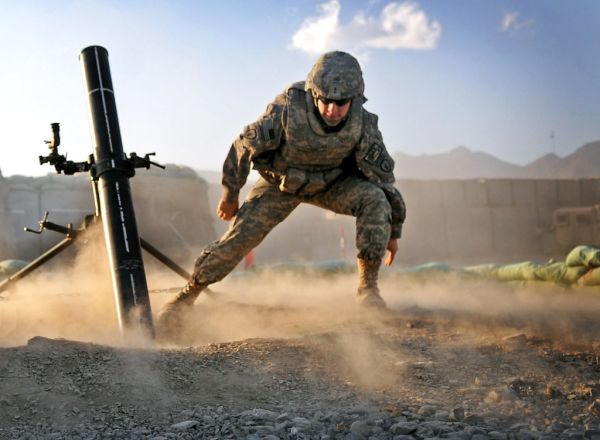Do Soldiers Wear Ear Protection?
You might think that soldiers, being tough and resilient, wouldn’t prioritize wearing ear protection in the midst of combat situations. However, the reality is quite different. Soldiers face a constant barrage of loud noises that can have lasting effects on their hearing health. So, the question remains: do soldiers prioritize their hearing protection amidst the chaos of battle?
We are supported by our audience. When you purchase through links on our site, we may earn an affiliate commission, at no extra cost for you. Learn more. Last update on 4th July 2025 / Images from Amazon Product Advertising API.
Military Regulations on Ear Protection
Military regulations require soldiers to wear ear protection during training exercises and operations to prevent hearing loss. Exposure to high levels of noise, exceeding 85 decibels on a daily basis or reaching peak levels of 140 decibels, can cause irreversible damage to the auditory system. To ensure the well-being of military personnel, annual hearing tests are mandatory to monitor any signs of hearing impairment and verify compliance with protective measures.
Under the oversight of the Department of Defense (DoD) and the Occupational Safety and Health Administration (OSHA), hearing conservation programs are enforced to protect soldiers from the detrimental effects of noise exposure. Leaders within the military play a critical role in emphasizing the significance of wearing ear protection in high-noise environments. It is the responsibility of every soldier to adhere to military regulations regarding ear protection to safeguard their hearing abilities for the present and future.
Compliance with these regulations is not merely a formality but a vital aspect of ensuring the overall readiness and effectiveness of the military force. By taking a proactive approach to mitigate the risks associated with noise exposure through the consistent use of ear protection, soldiers demonstrate their commitment to their own well-being and operational readiness.

Types of Ear Protection for Soldiers
To effectively protect your hearing in various military settings, understanding the different types of ear protection available to soldiers is crucial. Soldiers have access to a range of ear protection options, including foam earplugs, triple- and quad-flange earplugs, tactical earplugs, noise muffs, and TCAPS (Tactical Communication and Protective System). The choice of ear protection depends on factors such as the specific environment, type of noise, and noise levels that soldiers will be exposed to.
Audiologists play a significant role in helping soldiers determine the most suitable ear protection device based on individual needs. They conduct assessments to ensure proper fitting and regularly evaluate the effectiveness of the chosen ear protection. Regular assessment is essential to guarantee that soldiers are adequately protected from noise-induced hearing damage.
Properly wearing earplugs or earmuffs in loud environments is vital for soldiers to prevent long-term hearing damage and maintain their hearing health. By using the appropriate ear protection and ensuring it fits correctly, soldiers can mitigate the risks associated with high noise levels in combat situations. It is imperative that soldiers prioritize their hearing health by utilizing the available ear protection options and following recommended guidelines to safeguard against potential hearing damage.

Impact of Noise Exposure in Combat
In combat environments, exposure to high-intensity noises poses a significant risk of permanent hearing loss or tinnitus. The intensity of combat situations often makes it challenging for soldiers to consistently use hearing protection devices, leaving them vulnerable to the damaging effects of noise exposure. Ground units, in particular, have faced difficulties due to the lack of advanced ear protection technology tailored to combat scenarios. Unlike roles such as pilots or flight line crew, ground units historically had limited access to cutting-edge ear protection, exacerbating the risk of hearing loss among soldiers.
The absence of effective ear protection in combat settings has long been an issue impacting soldiers’ hearing health. Without adequate measures in place, the continual exposure to high-intensity noises during combat operations can lead to irreversible damage to the auditory system. Tinnitus, a common condition characterized by ringing or buzzing in the ears, and permanent hearing loss are among the potential consequences of insufficient hearing protection in combat environments.
As advancements in ear protection technology continue to progress, addressing the specific needs of ground units in combat remains crucial to mitigating the risks associated with noise exposure. Prioritizing the development and accessibility of robust hearing protection devices tailored to combat scenarios is essential in safeguarding soldiers’ hearing health amidst the demanding realities of warfare.
Training and Education on Hearing Protection
Given the critical role of ear protection in combat environments, soldiers are extensively trained on the importance of safeguarding their hearing to prevent irreversible damage. Training programs and educational materials stress the significance of wearing ear protection to mitigate the risks associated with exposure to loud noises. Soldiers are educated on how hearing loss can impact their mission readiness and overall well-being, highlighting the crucial need for proper ear protection in various noise environments.
The training provided emphasizes the importance of wearing ear protection consistently to prevent long-term damage. Soldiers are made aware of the specific situations where noise levels can reach harmful thresholds, necessitating the use of protective gear. By educating soldiers on the potential consequences of neglecting ear protection, the military aims to instill a culture of risk prevention and safety consciousness.
Regular reinforcement of the training ensures that soldiers understand the critical role ear protection plays in preserving their hearing health. This ongoing education not only underscores the importance of wearing ear protection but also serves as a reminder of the potential consequences of failing to do so. Ultimately, through comprehensive training and continuous education, soldiers are better equipped to protect their hearing in challenging military environments.

Challenges in Implementing Ear Protection
Soldiers facing challenges in implementing ear protection often grapple with balancing the need for situational awareness and the imperative of safeguarding their hearing in combat environments. When considering ear protection solutions, several obstacles may hinder their effective adoption:
- Situational Awareness: Soldiers worry that wearing ear protection may compromise their ability to hear crucial sounds on the battlefield, such as approaching threats or verbal commands.
- Communication: Traditional earplugs can impede communication by muffling speech and other auditory cues, making it harder for soldiers to interact effectively with their team members.
- Threat Detection: The inability to hear subtle noises or warning signs due to ear protection can hamper soldiers’ ability to detect potential threats in their surroundings promptly.
- Tactical Communication and Protective Systems (TCAPS): While TCAPS offer a balance between hearing protection and situational awareness, challenges exist in integrating these systems seamlessly into soldiers’ gear and routines.
- Tinnitus and Hearing Loss: The prevalence of tinnitus and hearing loss among service members underscores the critical need for reliable and adaptable ear protection solutions in combat settings.

